Presented by:
I’m glad to have you back this week, dear readers of Parallel universe. At noon on Monday, as life went on as usual in most of the world, the Moon cast a shadow across the planet, drawing a line from which those lucky enough could see a total solar eclipse. For me, one of the most overwhelming experiences that nature can give you. The image of the week could not be any other.
- In this edition, Professor Jorge Morales, doctor in Mechanical Engineering, will tell us about the latest innovations in the fusion between men and machines.. The company Neuralinkby Elon Musk, reported the first successful result achieved with a brain implant: a quadriplegic patient capable of using thought to move a cursor and play chess against the computer.
- Ignacio Retamal, dentist and doctor of Sciences, tells us about the importance of the bacteria that live with us in our bodies. It is an accepted fact that they play a critical role in the functioning of our biology. New studies are being able to map these interactions, enabling a better understanding of our communication with the bacterial universe, and promising new technologies for our health.
- And in today’s questionnaire we interview the mathematician and dean of the Faculty of Exact Sciences of the Andrés Bello University, Professor Pierre Paul Romagnoli.
This and much more in this new edition of Parallel universe. A week eclipsed by the Moon, but illuminated by science. Welcome aboard!
Before starting with what calls us, I tell you that today It is the third edition of this Parallel universe to which we are inviting you and we hope you like it, sign up and be part of this community of science lovers. One that promises to grow and develop different forms of meetings between scientists and the community.
1
PROFESSOR XY NEURALINK: THE CYBERNETIC ADVENTURE OF THE CENTURY?
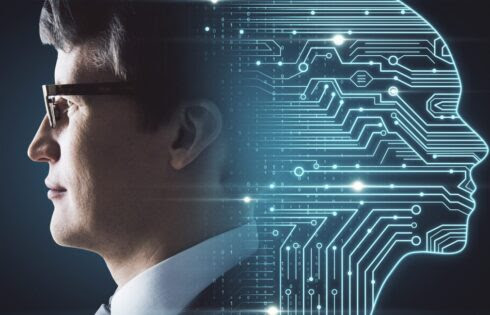

By Jorge Morales
Doctor in Mechanical Engineering
It seems worthy of a comic, The human-machine fusion is getting closer to reality thanks to Neuralinkthe company of South African businessman Elon Musk, one of the richest men in the world.
Professor X, charismatic leader of the X-Men, a paraplegic superhero, masters telepathic powers to communicate and control minds. Which Neuralink promises is not far from this: controlling, for example, your phone with a simple thought. Too much effort to get off the couch? No problem! Just think about “activate Netflix” and voilàthere’s your series marathon.
- The adventure began in a work authored by Musk himselfand published five years ago in the Journal of Medical Internet Researchwhere he showed how Neuralink began to develop brain-computer interfaces, small implants that directly read the electrical signals of the brain, and then interpret them using powerful computers.
The most important application of this technology is the help it can provide to people with certain forms of paralysis or neurodegenerative diseases. In a recent article published in the magazine Nature by a group of scientists from Stanford University, shows the case of a patient with amyotrophic lateral sclerosis (ALS) whose speech is no longer intelligible.
- The implant is capable of reading the brain signals that the patient generates when trying to speak, to then interpret them and finally reproduce them clearly to the listener.
- Just a couple of weeks ago, in a video published by Neuralink itself, the first patient using one of their implants is reported. It is about a young quadriplegic, Noland Arbaugh, who was able to move the cursor on his computer screen using thought. Now his challenge is greater: taking language classes. In his words, Arbaugh says “I will be Professor X.”
For now we do not have enough information, nor studies independent of the company, so we must take these results with caution. But everything indicates that the next crossover between fiction and reality is just around the corner. One where humans and machines merge in harmony thanks to the adventures of science and companies like Neuralink. Because if Elon Musk can turn us into cyber superheroes, can he?Who knows what else awaits us in this crazy adventure?
2
DISCOVERING THE SECRET INTERACTIONS BETWEEN OUR TISSUES AND MICROBES
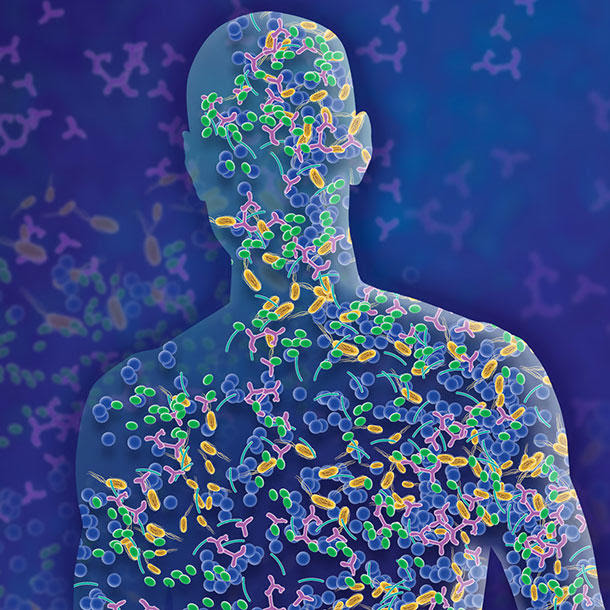

By Ignacio Retamal
Dentist and doctor of sciences
The complexity of our body does not end in our cells and organs; A vast collection of microorganisms, known as the microbiota, plays a crucial role in our physiology.
Although we have no doubt about the importance of this microbiota for the functioning of our biology, We still don’t fully understand how these microbes influence our functioning at a molecular level.
Using an innovative technology called BASEHIT, The researchers explored how bacteria that naturally colonize different human tissues interact with proteins that we secrete but are found outside our cells.
- The study not only confirmed that our tissues are constantly in dialogue with these microorganisms, but also mapped more than 1.7 million possible interactions between 519 bacterial strains and 3,324 human proteins.
- This “interactome” revealed a complex network of trans-kingdom connections between bacteria and human proteins, highlighting binding patterns that reflect deep biological logic.
For example, similar strains tend to interact with the same proteins, while certain bacteria specialize in specific tissues.
- These discoveries not only deepen our understanding of how commensal microbes help colonize new niches in the body and participate in tissue remodeling, but also suggest how they might influence our immune response.
The BASEHIT technology has opened the door to future studies that will be able to explore these interactions in detail, offering new perspectives on how resident microorganisms affect our health and disease.
These pioneering developments bring us closer to better understanding the complexity of our microbiome and its influence on our biology, opening new possibilities for therapies that could manipulate these interactions to improve our health.
- It’s just the beginning of what promises to be an exciting field of study in the years to come..
3
THE QUESTIONNAIRE: PIERRE PAUL ROMAGNOLI
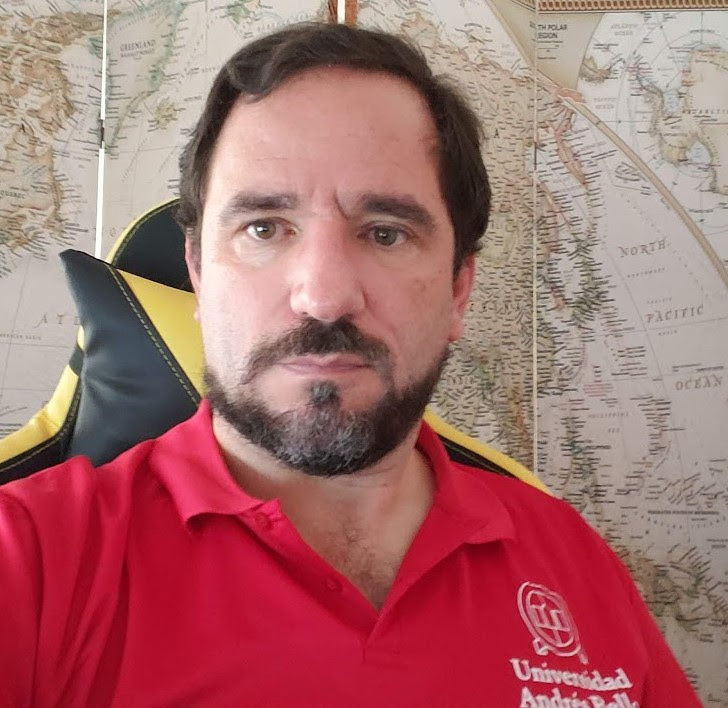
Every week we ask a scientist the same four questions. In this edition, we interview mathematician Pierre Paul Romagnoli, dean of the Faculty of Exact Sciences of the Andrés Bello University.
-What motivated you to dedicate yourself to science?
-Since I was a child I always wondered how and why things happened and I always looked for explanations for everything. In general, this inquisitive attitude was better received by my science teachers than by the rest of the teachers. In my last school years I thought that my passion was physics, because I loved the idea that with equations one could predict what could happen. It was only in college that I realized that it was mathematics that really excited me.
-What is the scientific work that most influenced your activity?
-The book that marked me the most and decided me in my line of research was Lectures on Ergodic Theory by Paul Halmos, which is a compilation of the author’s talks from 1956.
-What is the most important scientific problem to solve?
-It seems to me that the most important scientific problem, both in my discipline and less in general, is something that cannot be determined. It would have to be the question that the novelist, genius of scientific humor, Douglas Adams, wrote as “The meaning of life, the universe and everything else” and whose answer given in his work would be 42. But if I had to choose in Ergodic theory would be the Rokhlin conjecture of 1949, showing that a strongly mixing system is strongly 3-mixing. In simple terms, the mixing property is exactly that: the dynamics of mixing, say, two liquids. What no one has been able to demonstrate is whether a system that always leaves two liquids well mixed (homogeneously and uniformly) will also leave three liquids well mixed.
-What is the question that keeps you awake as a scientist and how do you face it?
-Much of my research has focused on what we call variational principles of entropy (and pressure) that connect the world of topology and measurement (probabilities). It’s a bit of a mysterious relationship between measure theory and topology. Although I understand how the results are tested, I need to understand the real substance of this connection, because with the explanations that I think I understand, it should work in examples where it fails. Every time I find another result with other techniques, I understand a little more and get a little less frustrated.
4
THE IMAGE OF THE WEEK
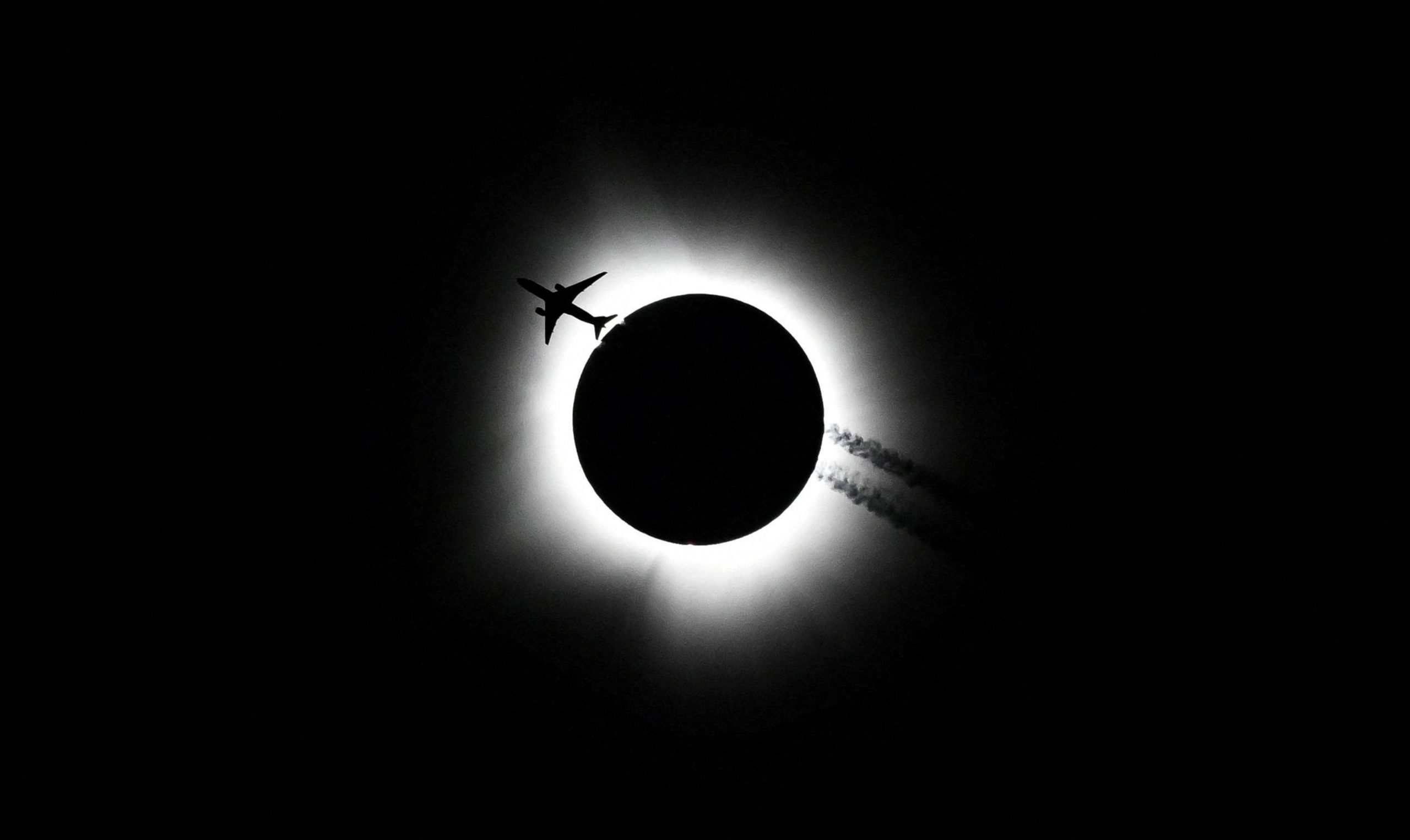
Bobby Goddin/USA Today Network/Reuters.
Two days ago, a total solar eclipse could be seen along a strip of the planet in the northern hemisphere, which passed through Mexico, the United States and Canada.
- These events occur when the Moon passes exactly in front of the Sun, producing a shadow about 200 km in diameter that moves as the Moon moves over the solar disk.
I was lucky enough to experience a total eclipse in Coquimbo, on May 2, 2019, and I am a witness to the imposing intoxication that it exerts on those who observe it. The blackened disk of the Sun, the darkness and the cool breeze, the behavior of animals.
But there is also science. Eclipses have proven to be valuable natural laboratories for conducting experiments. For example, the discovery, in 1870, of helium in the solar chromosphere, a layer of its atmosphere visible during an eclipse. Or the validation of Einstein’s general relativity in 1919, by observing the apparent displacement of the stars close to the Sun, which can only be seen when the Moon darkens the sky in its vicinity.
- Although in order to use them as laboratories we must know exactly when they will occur.And the remarkable thing is that we can predict them many centuries in advance.
While the accuracy of eclipse prediction has increased with advances in science and technology, Christopher Columbus himself took advantage of this knowledge on February 29, 1504 in Jamaica. That day he predicted a lunar eclipse, an issue that seemed like magic to the native peoples, which assured the Spaniards that they would continue to provide shelter and food.
There are too many stories that are hidden, like the Sun, behind each eclipse.
5
BRIEF PARALLELS
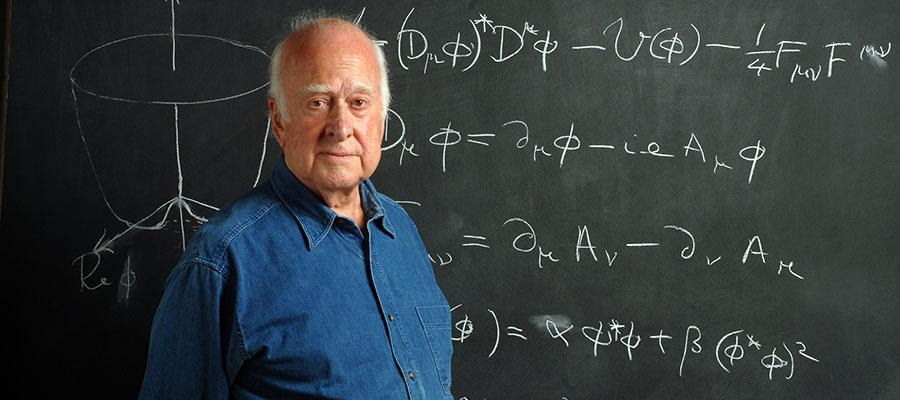
Peter Higgs
– Another eclipse passed through the scientific world on April 8. The death of physicist Peter Higgs (Nobel Prize in Physics 2013), at age 94, known for the particle that bears his name: the Higgs boson. It is about the excitation of a field – the Higgs field – that is capable of explaining how the mass of elementary particles arises. Higgs, simultaneously with five other physicists, created the theoretical idea, the mechanism that allowed this mass capture in particles that until then were not understood why they had it.
- The elusive boson remained in the shadows of experiments for almost 50 years, until the first experimental evidence appeared in 2012 at the Large Hadron Collider (LHC).
– In science there are also stories of corruption. After all, the pressure to publish, the competition for success and for resources produces the same behavior in scientists with low ethical standards as in people in any other activity.
- The story of the physicist Ranga Dias, of the University of Rochester, has been particularly commented, since a few years ago he published in the magazine Nature an extremely ambitious article that, if correct, would not only have won him the Nobel Prize, but would also have had a strong impact on our technologies. Dias reported having discovered a room temperature superconductor.
- A material capable of conducting an electric current without resistance.These exist, and are used, for example, in devices that perform nuclear magnetic resonance imaging, but they require extreme cooling, which makes them impractical in applications such as electricity transmission. If we discovered superconductors that operated at room temperature, we could transmit electricity without energy loss over long distances.
This is why groups of enthusiastic researchers have reported having achieved it many times. Sometimes by mistake, other times trying to deceive. Apparently, Dias’s case falls into the latter category.
– Today, Wednesday, April 10, is celebrated World Science and Technology Day, established by UNESCO in 1982. A particularly remembered day in Argentina, since the date celebrates the birth of the physiologist Bernardo Alberto Houssay, born in the neighboring country in 1887.
- In 1947 he won the Nobel Prize in Physiology or Medicine for his discovery of the role the pituitary gland plays in regulating the amount of glucose circulating in the bloodstream.He was the first Latin American to win a Nobel Prize in science, something even more meritorious due to the fact that he always worked from the University of Buenos Aires. Houssay always promoted scientific activity as the engine of people’s development: “The true supremacy of a people is based on the stubborn work of its thinkers, artists and men of science.”.
6
RECOMMENDATIONS
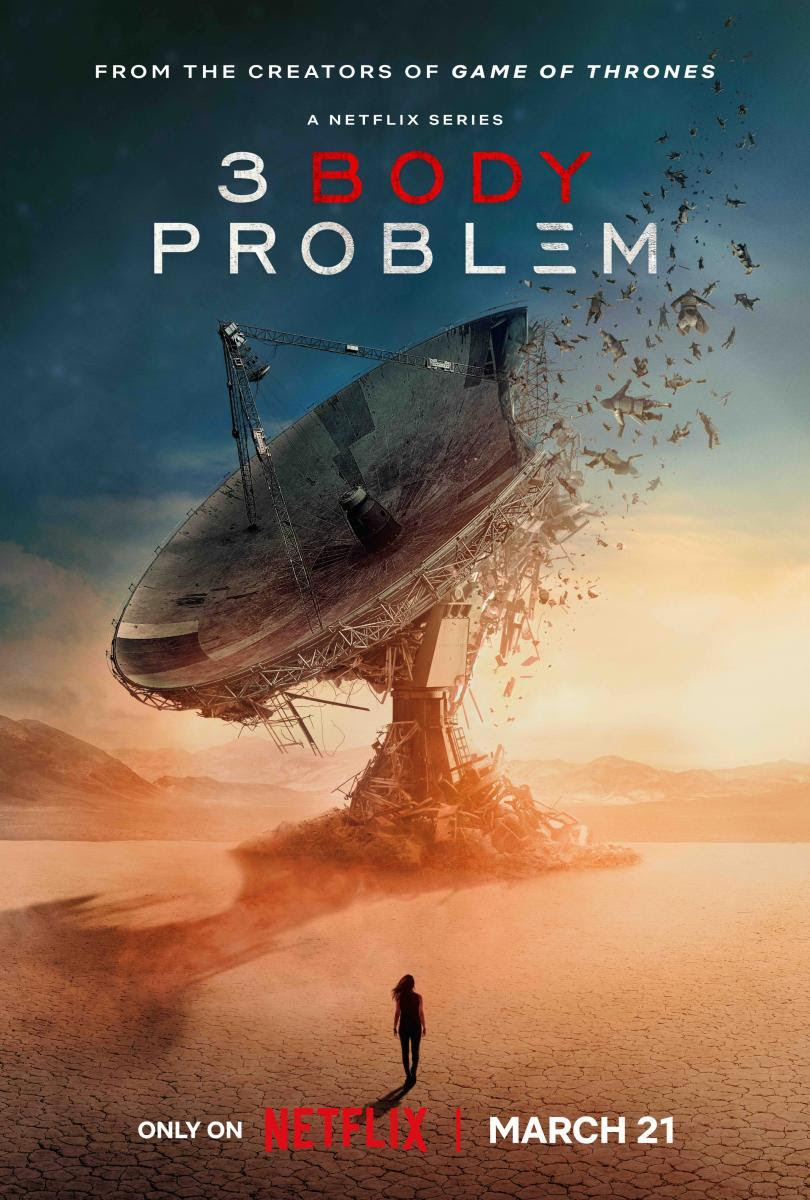
– The three body problem. This is a new Netflix series, based on the celebrated science fiction novel by Chinese writer Liu Cixin, published in 2008. If you like science fiction, this story will blow your mind. If you don’t want to miss details and a darker style, the book is for you. The series does not follow the events of the book literally, but it is very fast-paced, entertaining and captures the spirit of the story.
- Why the three bodies? (spoiler from here, although not too dramatic). It turns out that the story describes a civilization that arose on a planet orbiting a three-star system. When there are only two bodies, say the Earth and the Moon (we can ignore the Sun to a good approximation), Newton’s laws of gravitation can make accurate predictions for events in the distant future. This is how we can know the eclipses that will occur for the next thousands of years with seconds of precision.
- This is very different from what happens when more bodies interact with each other. Systems of this type behave “chaotically”. They are unpredictable after relatively short periods of time. This is how living in a three-star system is a big problem when it comes to predicting the future of civilization. If you live there, what you want most is to get out. Conquer other worlds.
- A series to marathon over the weekend!
– It’s a sad day for popular music. On this day, in 1979, Paul McCartney officially announced the breakup of The Beatles. As scientific as this is newsletter, We cannot abstract ourselves from issues this relevant and that affect so many Beatlemaniacal members of the scientific community.
- But other things happened in the history of music on April 10. Mark Oliver Everett, leader of the American band, turns 61 today Eelswho in 1998 published his second album, the extraordinary Electro-Shock Blues.
- Although the album is sad, as it talks about the illness and death of several of his family members, There is always a hint of humor and hope, both in his verses and in his arrangements and melodies.
- Everett is the son of a physical visionary who confronted all the ideas of his time with his beautiful and original ideas.This is Hugh Everett III, who in 1957 proposed a new formulation of quantum mechanics, which we know today as the “many worlds interpretation.” In 1982, his son Oliver found him dead in his house, the result of a heart attack. He was 51 years old.
Presented by:

That’s all for this week on Parallel universe. If you have comments, recommendations or topics to contribute, you can write to me at Universoparalelo@elmostrador.cl. The idea is that we generate a great community that leaves behind parliamentary show business and base human passions, to enter a much better world. A much more civilized one. In a Parallel universe. Until next week!







